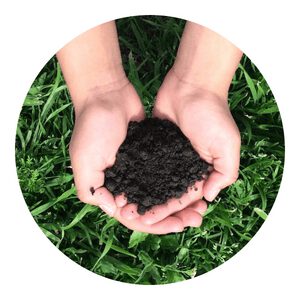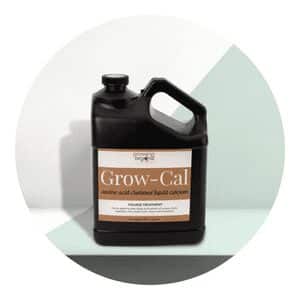Can You Grow Sweet Potatoes in California?
California has a diverse and unique climate, making it a great place for outdoor cultivation of many different types of vegetables.
Sweet potatoes are no exception!
Many people in California may be surprised to learn that they can easily grow sweet potatoes in their own backyard.
Not only do sweet potatoes require minimal maintenance, but they also offer an abundance of health benefits.
In this article, we will discuss the potential for growing sweet potatoes in California and provide tips on how to do so successfully.

California Sweet Potato Menu
Sweet Potatoes in California
Sweet potatoes are a popular vegetable in many cuisines and are a great addition to any meal.
But can you grow sweet potatoes in California?
The answer is yes!
California is one of the best places for growing sweet potatoes because of its climate and soil conditions.
The mild temperatures and long days allow sweet potato plants to thrive, as they need warm weather and plenty of sunlight in order to produce an abundance of roots.
In addition, the soil in California tends to be well-draining, which helps reduce the risk of fungus and disease that can harm the crop.
With proper care, it’s possible for gardeners to have success with their sweet potato plants.
When planting sweet potatoes in California, it’s important to choose a variety that is suited for the area.
Growing Conditions
Growing conditions are a major factor in determining whether or not you can successfully grow sweet potatoes in California.
With its sunny and dry climate, California is an ideal place to grow these tasty tubers.
However, there are some important factors to consider before planting sweet potatoes in the Golden State.
First of all, sweet potatoes need plenty of sunshine and warm weather to thrive.
It is best to plant them during the summer months when temperatures are above 75 degrees Fahrenheit; they will take around three months to fully mature.
Sweet potatoes also require well-drained soil that has been amended with compost or manure for optimal growth.
Additionally, plenty of water should be provided throughout the growing season in order for them to form large tubers.
Finally, it is essential that gardeners pay attention to any potential pests or diseases that could harm their crop as this could significantly reduce yields if left untreated.
Grow sweet potatoes in California's mild climate, thrive off sun and can handle humidity they can handle the heat, a nutritious vegetable that makes a great treat. With proper soil and ample water they will thrive, it's no wonder why it has become such a favorite to alive. Deep beneath the soil their shoots do weave, giving you access to sweet potatoes with so much ease. Throughout California these orange roots outgrow, making them an ideal crop for now to grow!
Chappy The Gardener
Varieties
California is known for its many varieties of produce, from oranges and lemons to avocados and grapes.
One vegetable that’s gaining traction in the Golden State is the sweet potato.
Sweet potatoes are a popular root crop with a variety of colors, textures, and flavors to choose from.
For those interested in growing their own sweet potatoes or adding them to their existing garden beds, it’s important to understand what types of sweet potatoes are best suited for California’s climate.
The two main varieties of sweet potatoes found in California are Beauregard and Garnet yams.
The Beauregard variety is considered the most common type found in grocery stores throughout California due to its mild flavor and vibrant orange color.
This variety produces large tubers with few eyes (roots) which makes them easier to peel when preparing recipes.
Planting and Care
With proper planting and care techniques, you can successfully produce sweet potatoes in this state.
When selecting a spot to plant your sweet potato crop, look for an area that receives full sun exposure and has well-drained soil.
Before you begin planting, ensure that the soil is sufficiently warmed – since sweet potatoes are a heat-loving crop they need temperatures of at least 60°F or above.
Proper spacing between plants is also important – typically 12 inches apart should do the trick!
Harvesting Tips
When planting sweet potatoes, make sure to pick an area that gets at least six hours of direct sunlight each day.
You’ll also want to make sure there is plenty of soil drainage so the roots don’t become waterlogged.
It’s best to harvest them when the vines have started dying off and before any frost hits, as this will ensure their peak sweetness and flavor.
Organic Ferilizer
Sweet potatoes are a nutrient-dense root vegetable that are well-suited to growing in California.
One of the key factors in growing healthy and productive sweet potatoes is the use of an appropriate fertilizer.
Organic fertilizers are a great option for sweet potato growers in California, as they are sustainable, environmentally friendly, and provide many benefits to the soil and plants.
One type of organic fertilizer that is well-suited to sweet potatoes is well-rotted manure.
This type of fertilizer is high in nitrogen, phosphorus, and potassium, which are all essential nutrients for sweet potatoes.
Additionally, well-rotted manure also helps to improve soil structure and fertility, which is important for the overall health of the sweet potato plants.
Manure can be applied at the rate of 3-4 pounds per 100 sqft, mixed in the soil before planting.
Another type of organic fertilizer that is well-suited to sweet potatoes is fish emulsion.
Fish emulsion is a liquid fertilizer that is made from fish waste and is high in nitrogen, phosphorus, and potassium.
Additionally, fish emulsion is also a good source of trace elements such as iron and zinc, which are important for the overall health of the sweet potato plants.
Fish emulsion can be applied every 4-6 weeks during the growing season at the rate of 3-4 tablespoons per gallon of water.
Another organic fertilizer that can be used is blood meal, it is a good source of Nitrogen which is essential for Sweet potato growth.
It can be applied at the rate of 2-3 pounds per 100 sqft, mixed in the soil before planting.
In addition to these fertilizers, it is also important to provide sweet potatoes with a consistent supply of moisture.
This can be done by providing a deep, infrequent watering or by using a drip irrigation system.
When using organic fertilizers, it is important to follow the manufacturer’s instructions, as rates and frequency of application can vary.
Additionally, soil test may be needed, to determine the specific nutrient needs of your sweet potato plants, and adjust the fertilizer accordingly.
Troubleshooting Issues
Growing sweet potatoes in California can be a challenging task, and there are a number of issues that can arise during the growing process.
However, with proper care and attention, many of these issues can be resolved.
One of the most common issues when growing sweet potatoes in California is poor soil quality.
Sweet potatoes require well-drained, sandy loam soil that is high in organic matter.
If the soil is too heavy or clay-like, it can lead to poor root development and slow growth.
To address this issue, you may need to amend your soil with organic matter such as compost or well-rotted manure before planting.
Additionally, proper soil testing is necessary to know what other nutrients are lacking and if any pH adjustment is needed.
Another common issue when growing sweet potatoes in California is pests and diseases.
Sweet potatoes are susceptible to a number of pests and diseases, including aphids, whiteflies, and leafhoppers, as well as fungal diseases like powdery mildew and anthracnose.
To prevent these issues, it’s important to keep the area around your sweet potato plants free of debris, and to practice good hygiene by removing and destroying any infected leaves.
Companion planting, using organic pesticides, and organic fungicides can also be helpful to prevent pests and diseases.
Another common problem is uneven water supply, sweet potatoes need consistent moisture throughout their growth cycle, not too dry or too wet.
This can be achieved by using a drip irrigation system, or by providing a deep, infrequent watering.
Another problem is lack of pollination, this is usually caused by poor weather conditions, lack of pollinators, or plants that are overcrowded.
To solve this problem, you can try to hand-pollinate the plants by gently shaking the flowers or using a small paintbrush to transfer pollen between flowers.
In conclusion, sweet potatoes are a wonderful, nutritious vegetable to grow in California.
With the right conditions and careful maintenance, gardeners can successfully cultivate a hearty crop of sweet potatoes every year.
When planted in late spring or early summer, many varieties of sweet potatoes can be harvested in the fall.
Sweet potatoes thrive in warm and humid climates, so with proper watering, fertilizing and weeding, growers can reap the rewards of their labor come harvest time.
Click To Grow

Solar Light

Plant Pots

Bird House
Helps Us Grow – Share If You Like













